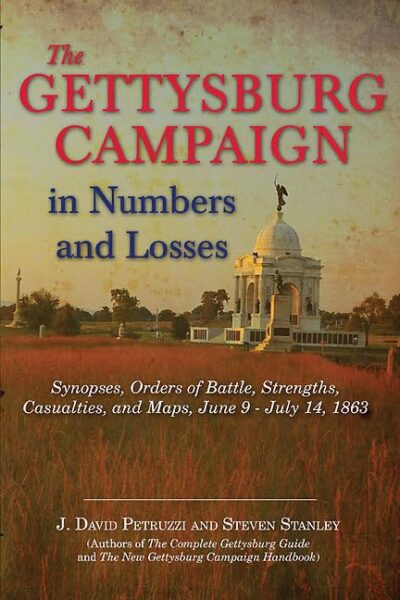Nearly two decades after the release of his consequential Lee’s Real Plan at Gettysburg, Troy D. Harman, a renowned Gettysburg National Military Park ranger, has returned with another contemplative treatment of the summer of 1863.
Harman opens his book with a thorough analysis of several key Gettysburg Campaign studies, but immediately pivots to a reinterpretation of traditional explanations of the battle’s origins. While dismissing as a “fairy tale” the notion that the Confederates somehow stumbled into an engagement at Gettysburg, Harman argues that “the pendulum has swung in the opposite direction,” with interpretations now commonly asserting a battle at Gettysburg was a mere “accidental meeting at a crossroads.” Instead, he asserts, “forethought figured into fighting,” for “Gettysburg constituted a natural place for battle.”
Harman claims that three manmade and natural factors led the belligerent armies to Gettysburg, including “rail communication links” to major cities; tributary connections as a setting for “the headwaters of the Chesapeake [Bay]…and the Susquehanna [River]”; and “hard-surface passes” (roads) branching toward every point of the compass.
While early campaign histories noted the significance of roads, terrain, and water, Harman argues, as more printed source material became available in the late nineteenth century (particularly after the federal government declassified and printed the well-known Official Records for public consumption), focus shifted to “personalities and disputes” and “problems of command or issues of temperament,” rather than the likes of transportation and environmental history. Later, Harman adds, in the mid-to-late twentieth century, “a generation of new students of the battle fell captive exclusively to old war stories to the extent that Gettysburg’s environmentally suitable location for battle disappeared.” Especially after the World Wars, a “philosophical angle” to study the campaign became “intellectually fascinating to social and technology historians, but too esoteric” for popular audiences.
At the core of Harman’s case is the realization that road, rail, and water determined not just where armies maneuvered, but assisted in awareness of where their enemy would or could maneuver. And this, says Harman, is a universal truth not just during the Civil War, but rather throughout all military history. He provides in-depth historical background on the infrastructural uniqueness of south-central Pennsylvania in the preceding centuries, and longstanding techniques and traditions that existed globally back to antiquity.
Additionally, Harman deals with issues of military jargon, including popular terms among Civil War-era contemporaries that are largely lost on readers today, as well as collective historical memory, which, he establishes, “is the burden of trying to mesh postwar symbolic truth with battle action on the ground.”
In one clarification of his thesis, Harman declares: “In constructing this work, there is no need to find a hidden treasure trove of unpublished works to make an otherwise implausible case plausible. There is neither the need to cherry pick with the research, nor to stretch or twist it to make an awkward fit or engage in counterfactual history that borders on fiction. To the contrary, the evidence for this case has existed under the battlefield historians’ collective nose all along.”
Harman intends for his work to reinterpret common sources so that “water, rail, and road are established as the starting point of discussion, with principles of war guiding the analysis.” Thus, he posits, “original reports, memorandums, testimonies, and articles [will] fall into place for the first time.” All Roads Led to Gettysburg is sure to remain a stimulating, provocative, and crucial modern military campaign study.
Codie Eash serves as Director of Education and Museum Operations at Seminary Ridge Museum and Education Center in Gettysburg, Pennsylvania. He is a founding contributor to PennCivilWar.com and a member of the Gettysburg Magazine editorial board.





